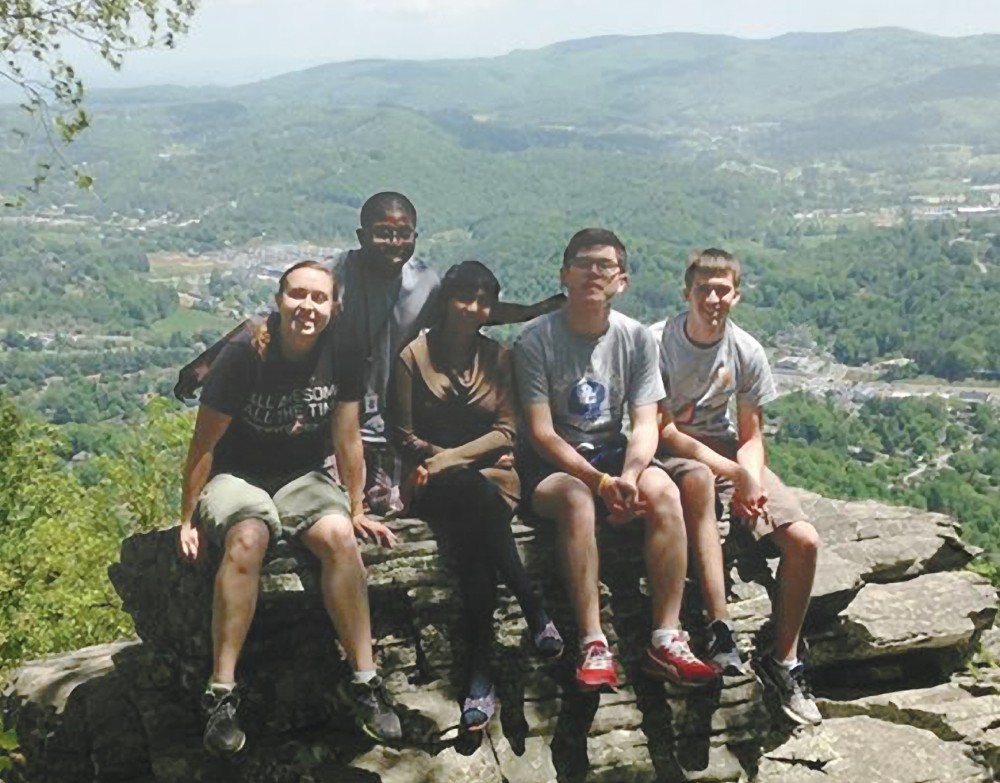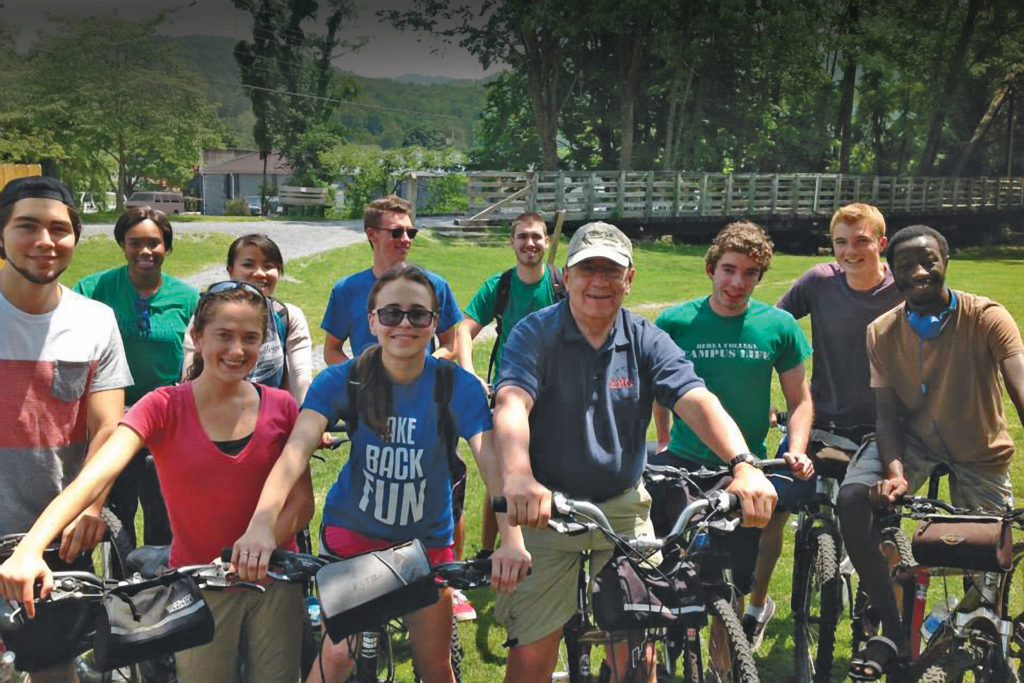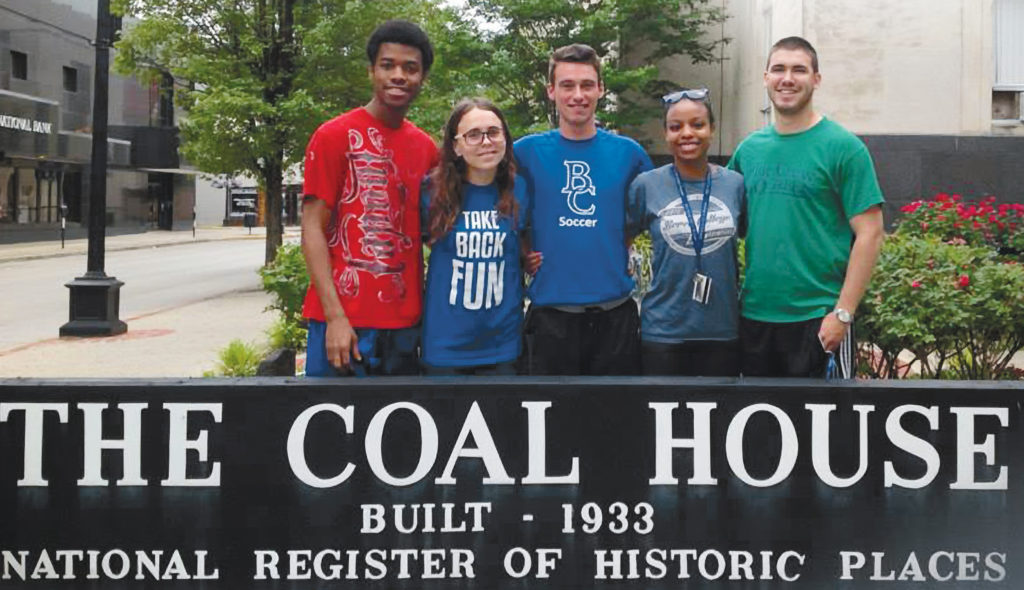What do bicycles, horses, and kayaks have in common with Appalachia’s economic future? What role does social media play in helping Appalachian businesses grow and thrive? What impact do venues featuring local foods and regional music have on tourist traffic in eastern Kentucky? What will zip lines and woodland trails do for rural economies? What impact will questions such as these have on Berea College students?
Seeking answers to these questions has been the focus of Berea College students in the Entrepreneurship for the Public Good (EPG) program for the last twelve years. Every summer, EPG aims at producing a group of students with entrepreneurial and leadership abilities to help them capitalize on opportunities in their respective academic disciplines. According to Dr. Peter Hackbert, director of the program since 2007, EPG’s teaching format has focused on a student-centered method where students learn through direct involvement in rural Eastern Kentucky communities. The program connects students with local and regional businesses, enabling students to practice and execute their entrepreneurial abilities while contributing to Eastern Kentucky’s rural economic development.
For the past two summers, the program has worked in several counties promoting ventures that will boost recognition of the region’s economic and cultural assets by the outside world. The work focused on using social media effectively to expand locally induced economic development through two slightly differing spheres—supporting local businesses to promote the culture of buying locally and advocating expansion of the Kentucky Trail Town Program to bring more tourists to small towns in Eastern Kentucky.

(Left to Right) Katelyn Blair, ’16, Thomas Downer, ’15, Moondil Jahan, ’16, Doli Han, ’15, Richard Cameron Cohran, ’16
“Buy Local!”
In summer 2013, EPG’s tenth cohort of students collaborated with small local businesses in Eastern Kentucky in an effort to use social media platforms to heighten awareness of the importance of buying locally. “We need to keep our money locally,” says Dr. Hackbert, claiming that it provides greater wealth and healthier economies through the internal circulation of money. Also, social media is inexpensive and hosts the voices of customers through online reviews in a way that helps reinforce the recognition of local brands. For this mission, EPG deepened its small business understanding of five social media platforms: TripAdvisor, Yelp, Google+, Facebook, and Pinterest.

According to Angie Li ’16, member of EPG’s tenth cohort, these platforms were chosen based on their economic research, viability, and projected popularity. “It is our goal for business owners to find these platforms useful to increasing revenue, forging relationships with their clients and creating new relationships with potential customers.” Li’s team worked in Berea and communities in Breathitt and Knott Counties where they taught small business owners how to launch and maintain their social media profiles.
To assist their campaign, the student teams used a mobile-centric marketing approach called SoLoMo, an acronym which stands for “Social. Local. Mobile.” According to Dr. Hackbert, SoLoMo is a marketing concept that takes advantage of the growing trend in the use of mobile devices and the participation of the community in providing reviews on social media platforms to help consumers find choices and secure information about local destinations available to shoppers. In short, the approach uses customers’ reviews and experiences to promote local businesses through mobile devices. According to Li, this availability of small business ventures in various mobile-based web interfaces attracts more tourists and potential consumers to economically developing regions.
Since the idea of using social media for business purposes is still not a common practice in Eastern Kentucky, the EPG students had to do extensive background research on various local businesses and approach them accordingly.

“For example, a flower shop or a jewelry store on the main road of a small county will have a different social media audience than a Mexican restaurant having several branches in more than five counties,” explains Moondil Jahan ’16. “We met a wide range of businesses from a struggling hardware store to a thriving zip lining company attracting visitors from the larger cities. Some business owners appreciated social media right away and immediately started to offer online coupons, discounts, and prizes using their Google+, TripAdvisor or Facebook pages.”
Some of the local enterprises the EPG students assisted to improve their social media presence include Peacecraft and Student Craft Store in Berea, El Azul Grande and Barnard’s Jewelry in Hazard, and Saddle Up Elk Tours in Hindman, Kentucky.
Adventure Tourism
During summer 2014, EPG’s 11th cohort focused on linking the buy-local perspective to the Kentucky Trail Town Program. A trail town is a destination located adjacent to a multistate long-distance biking, hiking, or kayaking route equipped with amenities that invite tourists to venture from the trail paths and explore the local cultural and natural resources, as well as historical assets. Dr. Hackbert explains the Kentucky Trail Town Program is a government initiative that recognizes the economic value of adventure tourism and assists towns to organize their resources into becoming more hospitable for these particular tourists. However, to receive this support and be certified as a Kentucky Trail Town, civic leaders need to initially apply to the Trail Town program, and this was where EPG came in. Throughout the summer, Berea’s students investigated the economic advantages and special features of adventure tourism and presented their findings to eight counties in Eastern Kentucky encouraging them to apply to the Kentucky Trail Town Program.

The students began their investigation by examining the Outdoor Industry Association’s 2013 estimates of participation in outdoor human-powered recreation, which includes varieties of bicycle-based, camp-based, water-based and trail-based recreations. The students also viewed the destination plans and spending patterns of travelers coming to Eastern Kentucky from adjacent states, nationally and internationally through the Trans America Bike Trail and the Sheltowee Trace. As a result, they observed that these visitors stimulate the local economic development and contribute to the area’s revenue.
This student group also took its inspiration from other small towns in the area who had benefited from being identified as a trail town in Central Appalachia. In 2000, Gilbert, West Virginia, had a population of 400 and limited economic activities. Today Gilbert has numerous lodging rooms and restaurants, a cinema, four pharmacies, a regional ambulance service, two car washes, a large campground and a number of ATV repair shops. As of the 2010 census, Gilbert has experienced a 10% population increase and a considerable surge in tax revenues and infrastructure improvements. The opening of the Hatfield & McCoy Browning Fork Trailhead was one of the factors that induced this Gilbert development. Damascus, Virginia, primarily known as one destination on the Virginia Creeper Trail, and West Newton, Pennsylvania, located along the Great Alleghany Passage, are among other towns EPG examined as successful models.
In addition to analyzing statistical indications of development, the students themselves traveled across the various bike, hike and water trails passing through these towns to experience the region as adventure tourists. They spent two days in Damascus and Abingdon, Virginia, experiencing the Virginia Creeper Trail and assessing its economic value to small independent business owners. “We experienced the route and journeys of a tourist by hiking the Natural Bridge, rock-climbing at Torrent Falls, cycling the Virginia Creeper Trail in Abingdon- Damascus and zip lining at Red River Gorge,” says Nicoleta Dvornicov ’17, reflecting on her EPG experience.
During and after traveling, the students took time to write reviews of their experiences on several social media platforms. They also conducted extensive interviews with small business owners as well as the hiking and biking trail enthusiasts. “We shared our knowledge with them on how to use social media to improve one’s business and attract adventure tourists by presenting the results and views our online reviews received,” says Dvornicov. Eventually, as a result of their analysis and travelling experience, the students realized that meeting tourists’ needs with hospitality, gaining empathy based upon meeting needs, providing a welcoming venue, and stimulating user- generated reviews of tourist experiences increase small town revisits.
According to Dvornicov, their next step was to try to convince the administration of eight counties to pursue the Kentucky Trail Town certification, making their towns recognized as trail-towns. During the meetings, EPG students conducted briefings with judge executives of the counties and reported their findings and estimations of how adventure tourism would contribute to the economic development of the towns. The presentations resulted in the signing of formal letters of intent from six Judge Executives to be sent to the Kentucky Tourism Trail Town Program—the first crucial step for the county seats toward becoming trail towns. As a result of EPG’s work, Eastern Kentucky’s local assets now have better visibility and exposure to visitors. With social media initiatives improving local business opportunities, the Eastern Kentucky region has now become an emerging hotbed of Kentucky’s Adventure Tourism Trail Town projects.

“The EPG summer has empowered me with knowledge and understanding of Eastern Kentucky’s history,” says Dvornicov, reflecting on her experience in the summer of 2014. “It has taught me the benefits of social media in economic development, and has promoted my critical thinking abilities.” Li claims that EPG has helped her in utilizing her abilities to pursue more meaningful careers in the future. In asking questions and fostering the search for answers, the Entrepreneurship for the Public Good program offers valuable opportunities for students to explore their own entrepreneurial interests while helping Appalachian entrepreneurs succeed in theirs.


